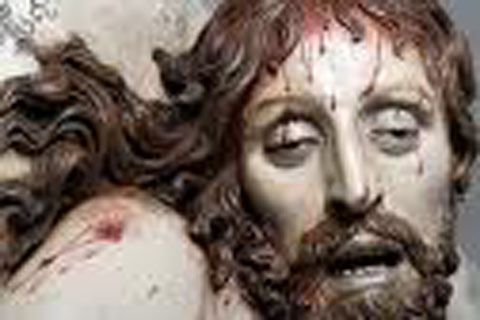The nuns of the Monastery of San Joaquin and Santa Ana in Valladolid were reluctant to lend Pedro de Mena’s Mater Dolorosa to the National Gallery’s new exhibition of Spanish seventeenth-century religious art, “The Sacred Made Real”. When the loan request arrived, the sixteen nuns gathered to vote on it, as they do on all important questions affecting the sorority. The rosewood ballot box was passed round and into it were placed, one by one, sixteen black marbles.
It was only when the museum sent a special emissary to plead the museum’s case that this most emphatic of refusals was reconsidered and, after much soul-searching, reversed. It was eventually decided that the Valladolid Virgin of Sorrows, a masterpiece of polychrome statuary, would be allowed to travel after all – but only on the strict understanding that the utmost respect be afforded to her. Photographs might be taken of the Virgin, but only in wide shot. There were to be no close-ups, no unfeeling paparazzi intrusions on her grief, no tactless zoomings-in on the single glass tear that trickles frozenly forever down her lightly flushed cheek.
It was only when the museum sent a special emissary to plead the museum’s case that this most emphatic of refusals was reconsidered and, after much soul-searching, reversed. It was eventually decided that the Valladolid Virgin of Sorrows, a masterpiece of polychrome statuary, would be allowed to travel after all – but only on the strict understanding that the utmost respect be afforded to her. Photographs might be taken of the Virgin, but only in wide shot. There were to be no close-ups, no unfeeling paparazzi intrusions on her grief, no tactless zoomings-in on the single glass tear that trickles frozenly forever down her lightly flushed cheek.
The episode is a reminder that to many people in Spain, even today, the sculptures and paintings that have been gathered together for this boldly unusual and utterly compelling exhibition are not merely works of art. They are cult objects, holy things, touched by the numinousness of the divine. This is particularly true of the many painted statues which have been included in the show, and which collectively amount to its greatest revelation. Often life-size, they form a crowd of suffering, dying Christs, weeping Virgins and saints entranced by mystic visions.
Rarely exhibited outside Spain, these startlingly vivid figures were sculpted by generations of long underrated master-carvers and painted, with breathtaking skill, by polychromers whose...


